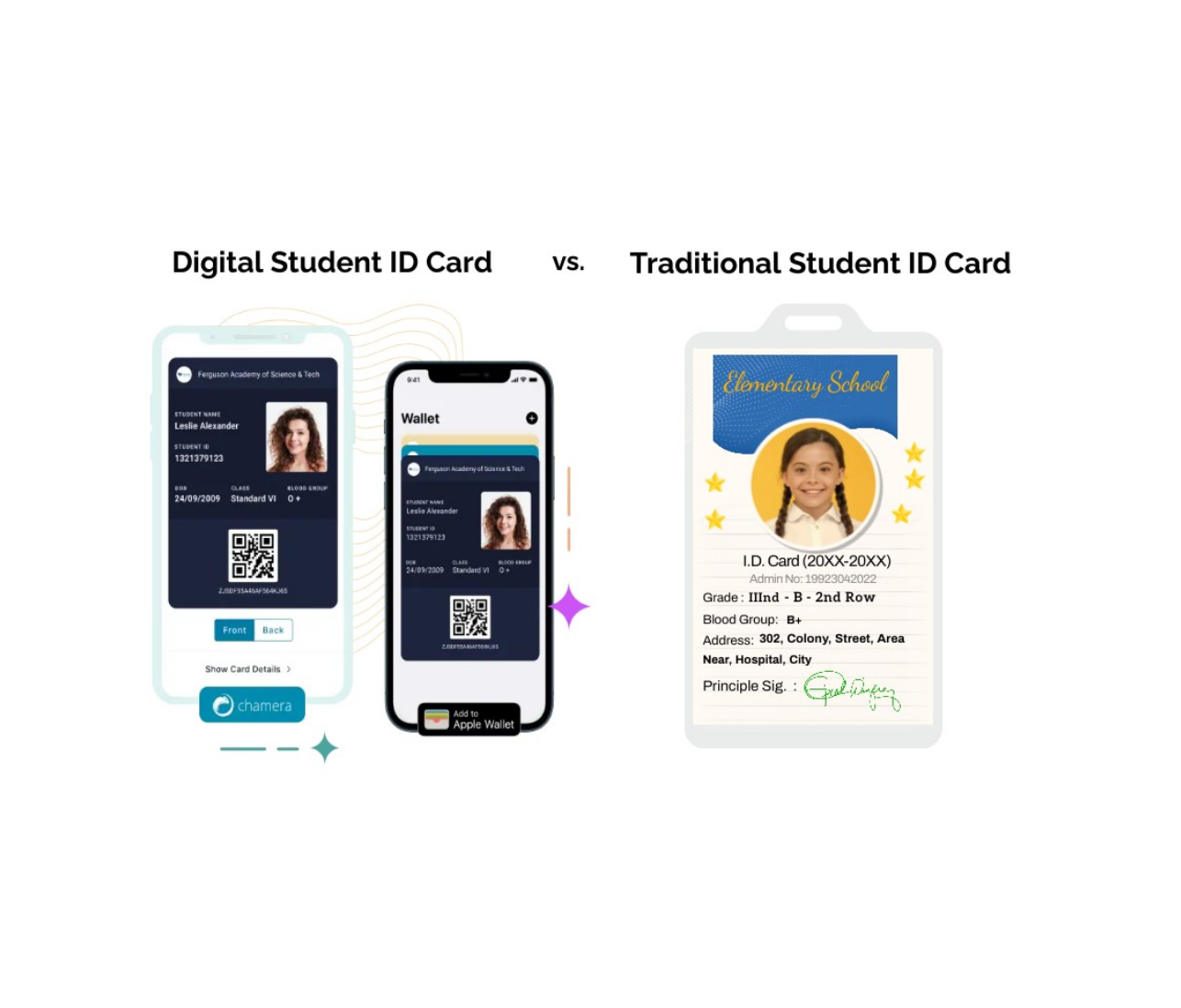In the fast-paced landscape of education, where technology continues to reshape traditional practices, one remarkable advancement has been gaining ground – digital student ID cards. These innovative credentials are not just pieces of plastic; they represent a transformative wave, revolutionising various facets of educational institutions. Let’s delve into the realm of “Tech-Savvy Campuses” and explore how digital ID cards are reshaping the academic landscape.
A Modern Educational Frontier
In an era where digitalisation touches every aspect of our lives, educational institutions are not lagging behind. The primary catalyst for this change is the adoption of digital ID cards. Now, more than ever, campuses are embracing technology to streamline processes and enhance the overall student experience.
Unlocking Doors to Efficiency
At the forefront of the digital student ID card revolution is the significant improvement in efficiency. Traditional ID cards, often prone to loss or damage, are now making way for their digital counterparts. The mere tap or scan of a digital student ID opens up a world of possibilities, from accessing secure areas to borrowing library books seamlessly.
The introduction of a digital student ID system not only minimises the risk of physical card loss but also provides a user-friendly experience for students and staff. This technological leap ensures that the campus community can navigate the institution effortlessly.
Empowering Students
Imagine a scenario where students no longer need to fumble through wallets or backpacks to locate their physical ID cards. The advent of digital student ID apps is turning this vision into reality. These apps, accessible on smartphones, allow students to carry their digital IDs conveniently. The app not only serves as a virtual identification card but also provides a centralised platform for various campus services. From event registrations to meal plans, the app becomes a one-stop solution, simplifying student life and fostering a sense of digital community.
Enhanced Security Through Innovation
Security is a paramount concern for educational institutions. Traditional ID cards, susceptible to forgery or misuse, posed a challenge in maintaining a secure campus environment. The integration of digital student ID systems addresses these concerns by leveraging cutting-edge technology. The incorporation of secure encryption and authentication mechanisms in digital student ID cards enhances the overall security of campus premises. With features like biometric verification and multifactor authentication, these digital credentials ensure that only authorised individuals gain access to sensitive areas.
A Holistic Approach
The shift towards a digital ID system represents a holistic approach to security, seamlessly integrating with existing campus infrastructure. Whether it’s controlling access to dormitories, laboratories, or specialised facilities, the system provides administrators with a robust tool to manage and monitor campus security effectively.
Streamlining Administrative Processes
Educational institutions are complex ecosystems with intricate administrative processes. The adoption of digital student ID cards is simplifying these processes, making administrative tasks more efficient. From attendance tracking to student record management, the digitalisation of student IDs reduces paperwork and manual data entry.
Redefining Attendance
Attendance tracking is a fundamental aspect of academic administration. With traditional methods, professors often spend valuable class time manually recording attendance. The introduction of digital ID cards streamlines this process, allowing for automated attendance tracking. Professors with digital scanners or mobile apps can efficiently record attendance by scanning students’ digital IDs. This saves time and provides accurate and real-time data for administrative purposes.
Innovative Financial Transactions
The evolution of digital student ID cards extends beyond physical access to campus services. With the integration of payment functionalities, these digital credentials become a versatile tool for financial transactions on campus. Students can link their digital IDs to prepaid accounts for dining services, vending machines, and even campus stores.
Digital student ID apps with secure payment features redefine how students handle their campus finances. The convenience of making purchases with a simple tap or scan enhances the speed of transactions and reduces the need to carry physical cash or cards.
Continuous Innovation in Digital Security
As the digital landscape evolves, so does the need for robust security measures. Digital student ID systems are at the forefront of adopting and innovating security features to stay ahead of potential threats. From biometric authentication to blockchain technology, continuous advancements in digital security ensure the integrity and reliability of these digital credentials. Integrating blockchain technology adds an extra layer of security to student IDs. This decentralised and tamper-resistant system enhances the trustworthiness of student credentials, providing a transparent and secure method of verification for academic and professional purposes.
Embracing Sustainability
In the age of environmental consciousness, the shift towards digital ID cards aligns with sustainability goals. Traditional plastic ID cards contribute to waste and environmental degradation. Digital IDs, being electronic, significantly reduce the carbon footprint associated with physical card production and disposal. The adoption of digital IDs contributes to the campus’s green initiatives. By eliminating the need for plastic card production and regular replacements, educational institutions can demonstrate their commitment to environmental sustainability. It’s a small change with a significant impact, aligning with the values of eco-conscious students and faculty.
Future Prospects
As we explore the transformative power of digital ID cards, it’s essential to consider the future prospects of this technology. The ongoing integration of advanced features, such as near-field communication (NFC) for contactless transactions and integration with smart campus systems, opens up exciting possibilities.
Beyond Boundaries
The evolution of student IDs extends beyond the confines of campus boundaries. As technology continues to advance, these digital credentials may become universal, enabling students to seamlessly access services beyond the educational institution. From public transportation to recreational facilities, the digital ID could become a versatile tool for individuals in various aspects of life.
Conclusion
Digital student ID cards emerge as catalysts for positive change in the dynamic educational technology landscape. They go beyond serving as mere identification tools, becoming critical players in enhancing campus efficiency, security, and sustainability.
As we witness educational institutions’ ongoing digital transformation, the embrace of digital ID cards paves the way for a more connected, secure, and environmentally conscious future. The game is changing, and “Tech-Savvy Campuses” are leading the way with innovation that benefits both the institution and its vibrant community.



